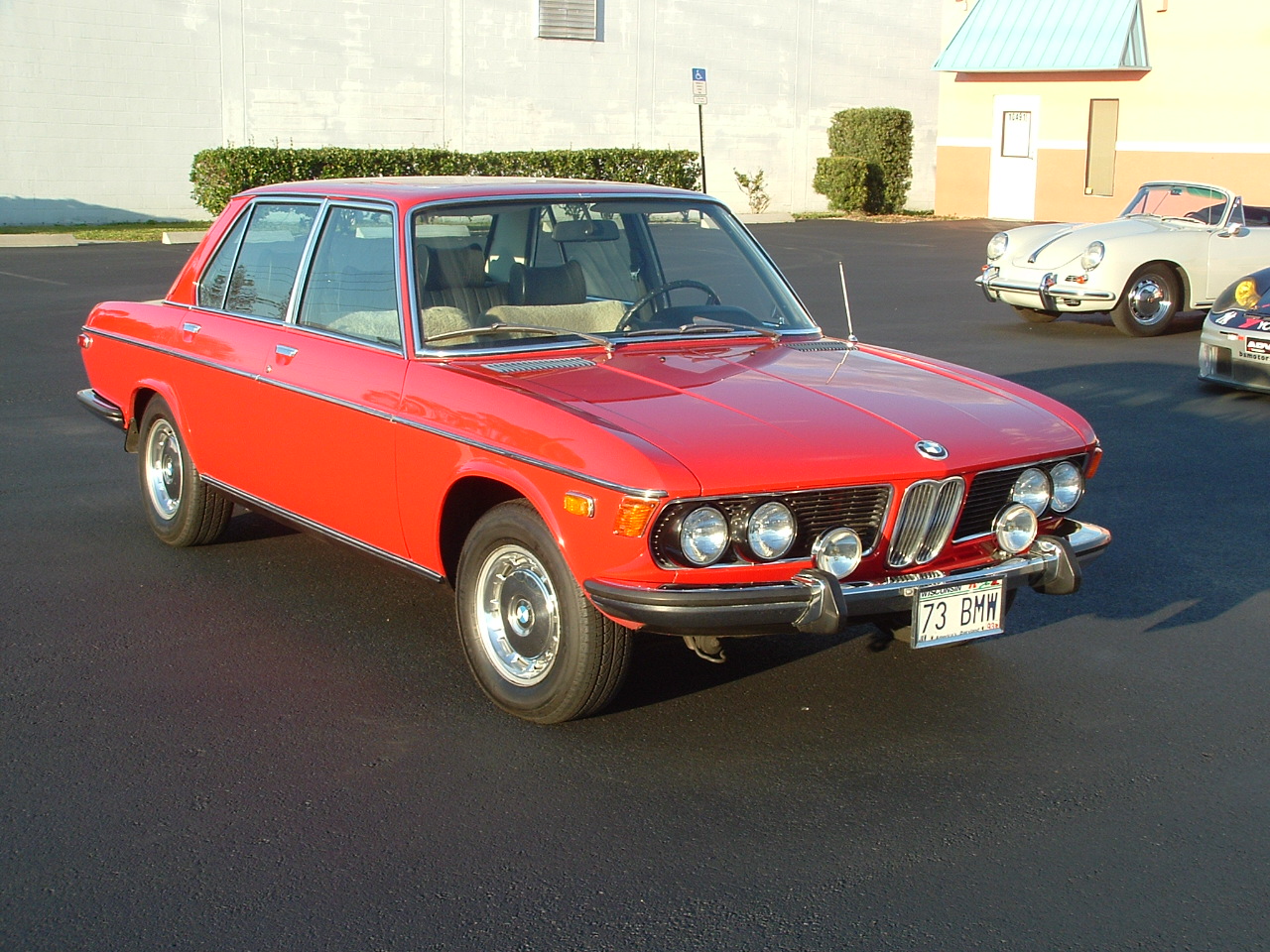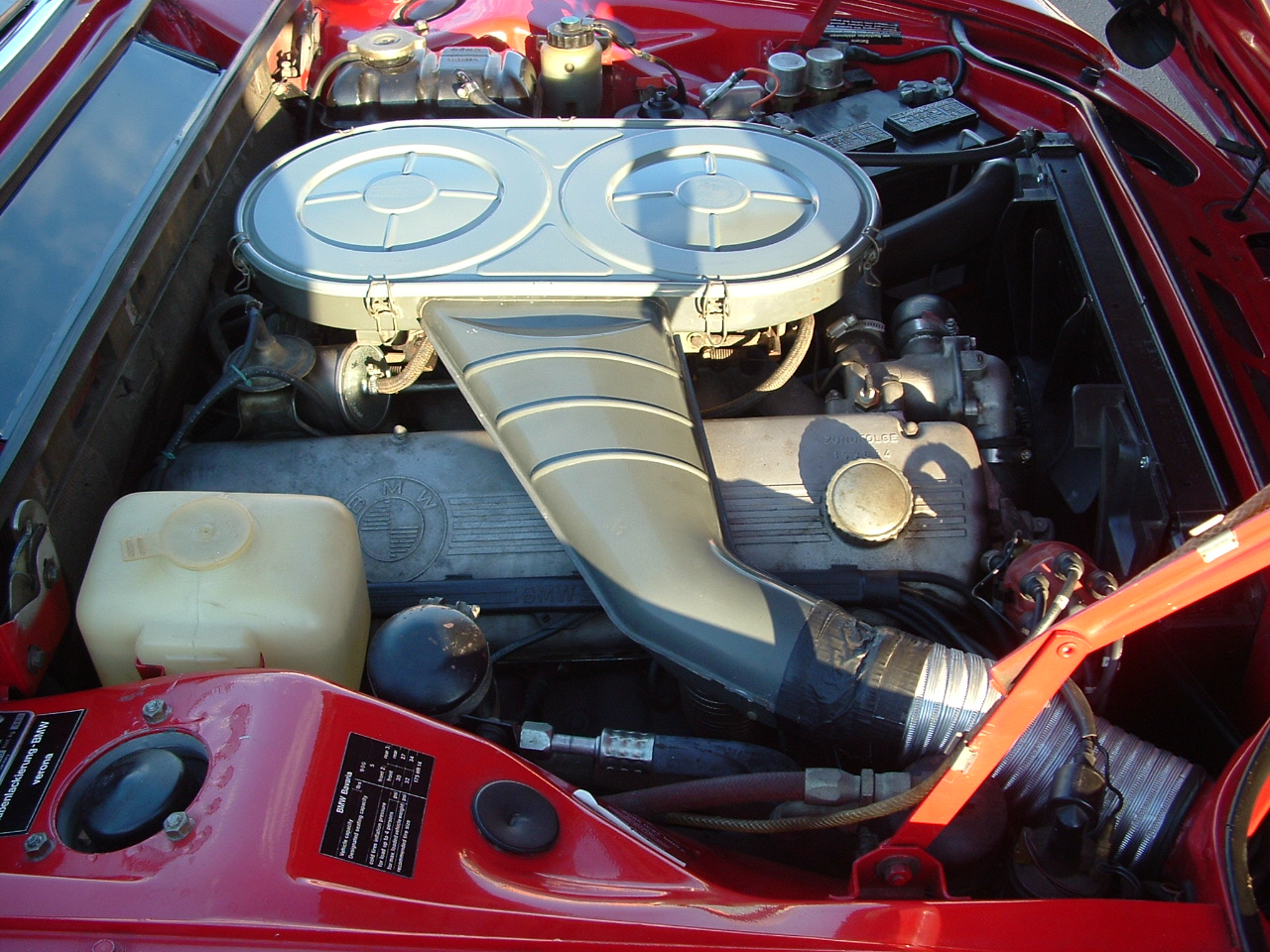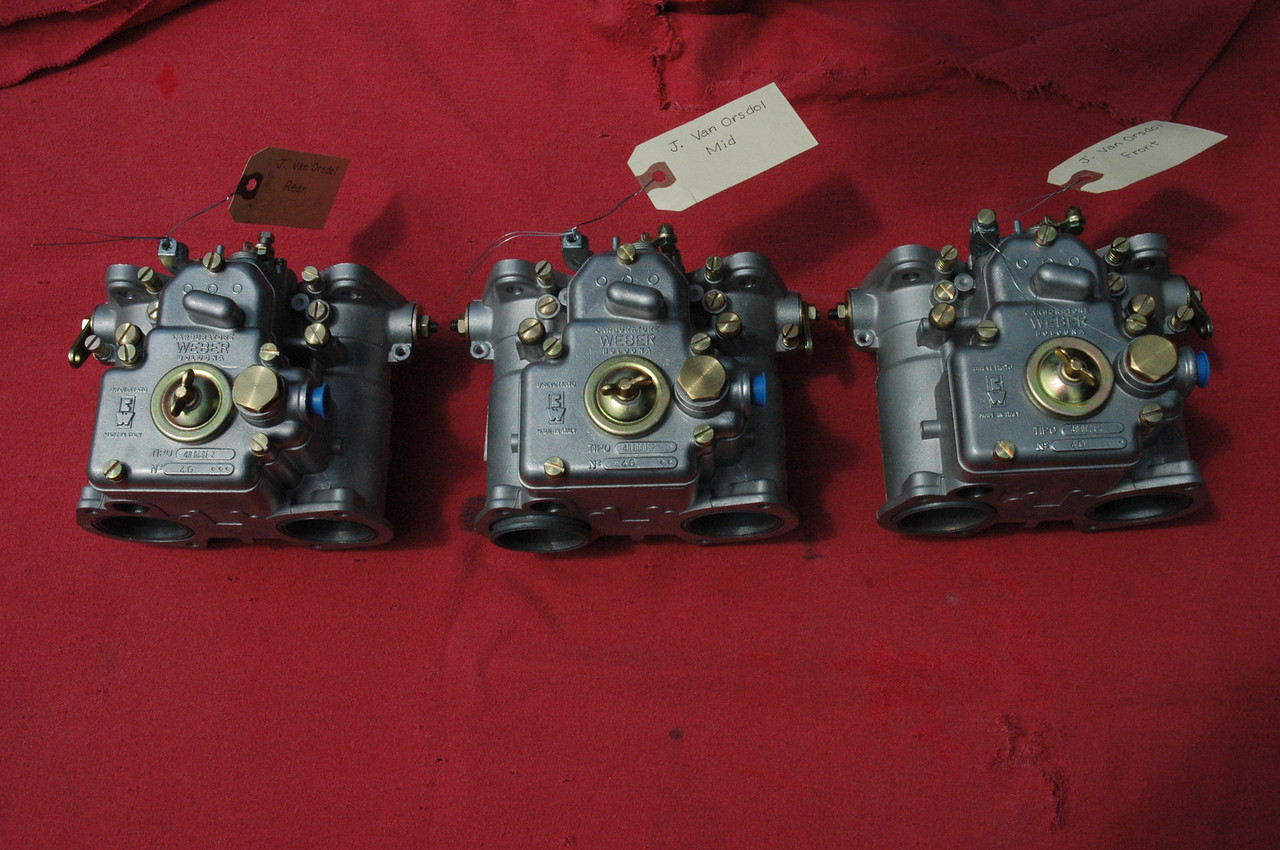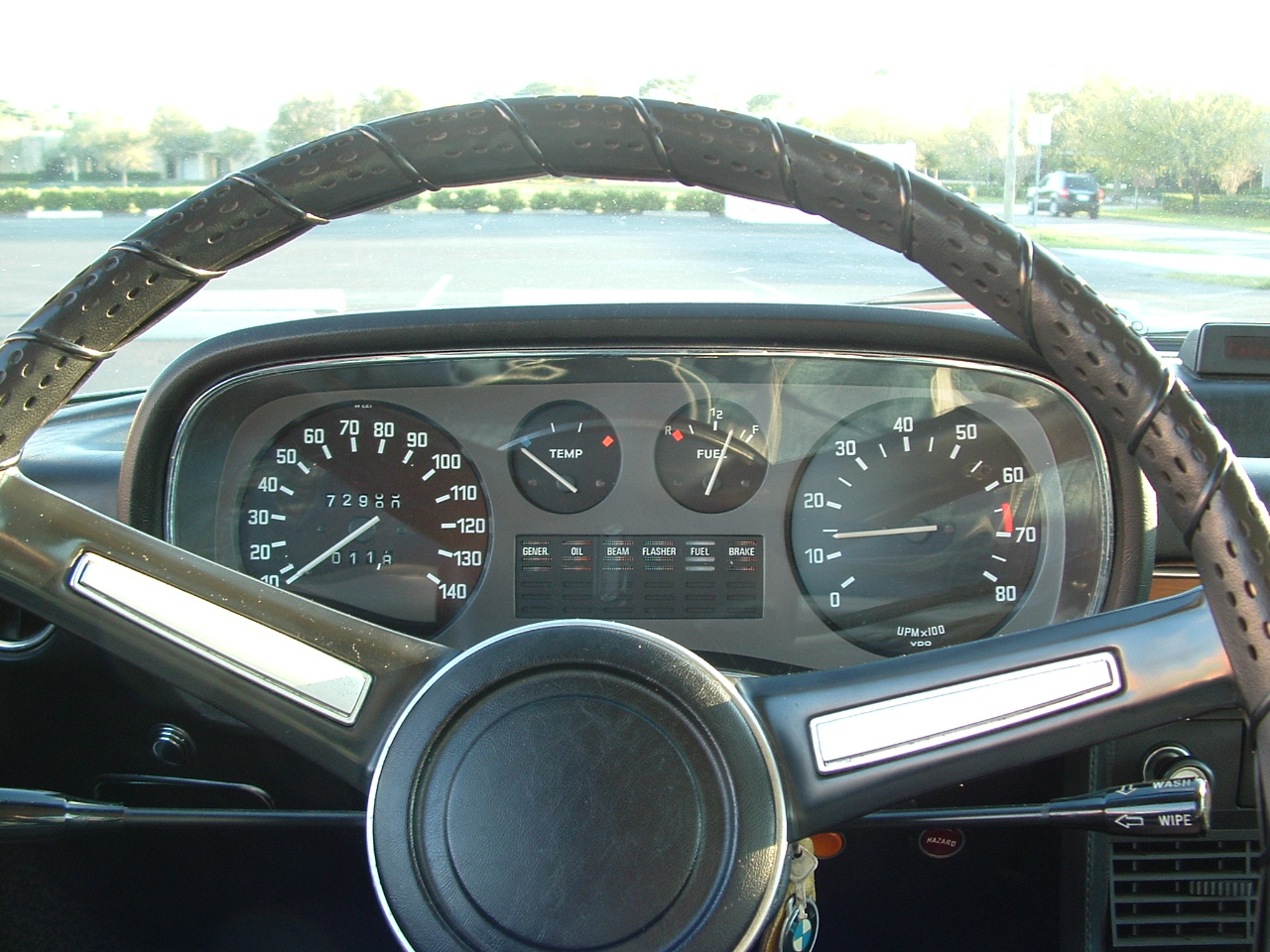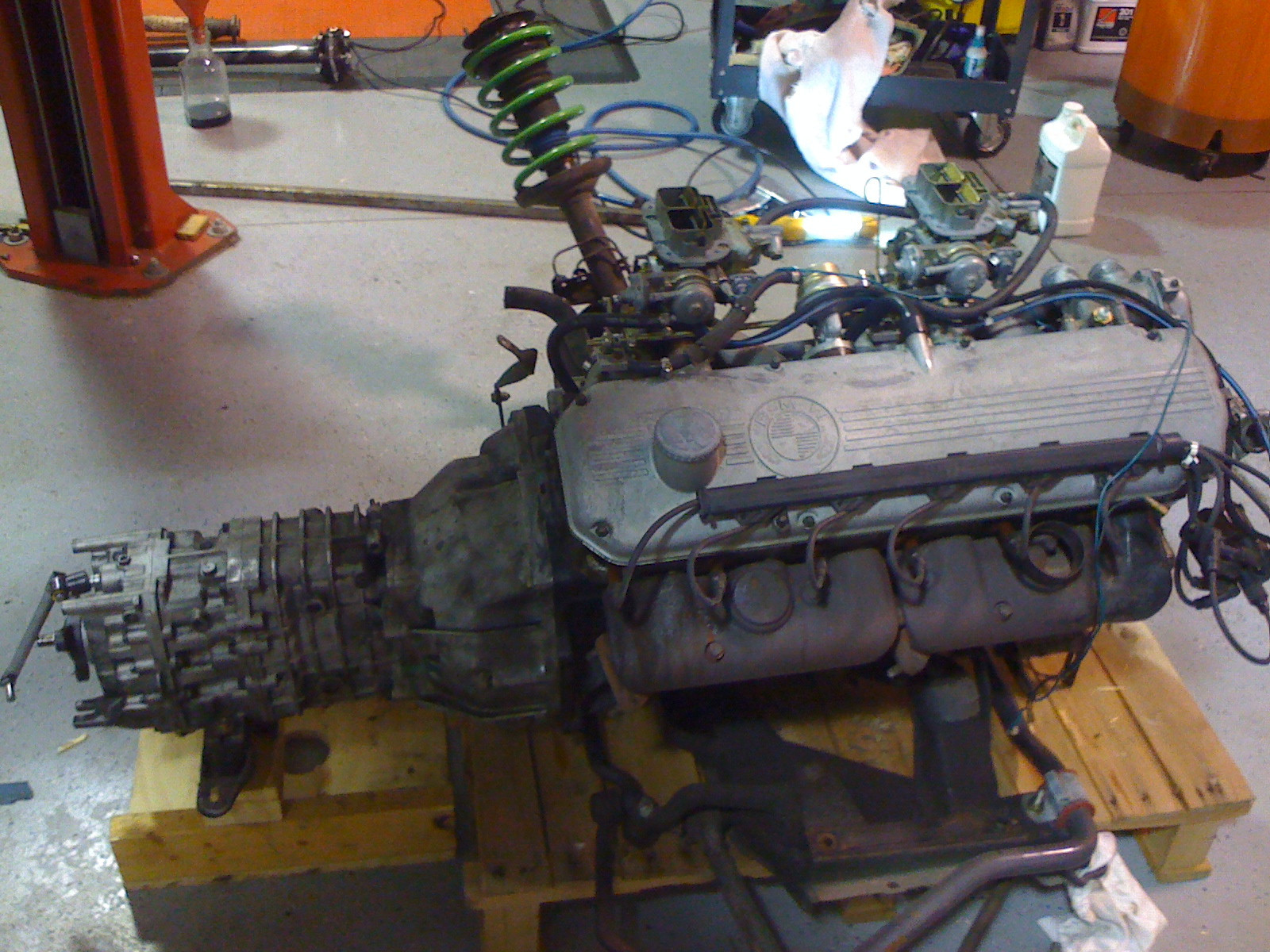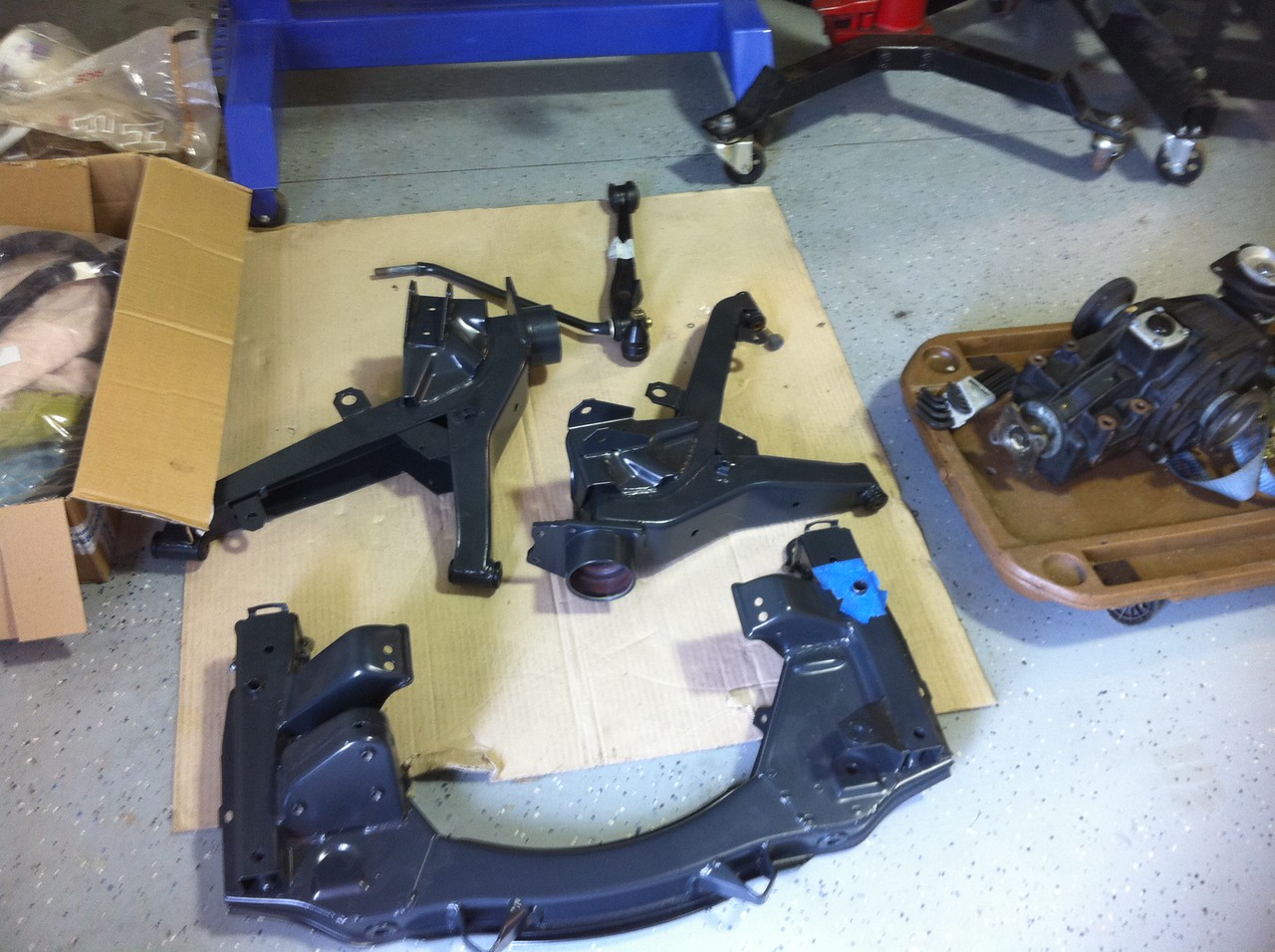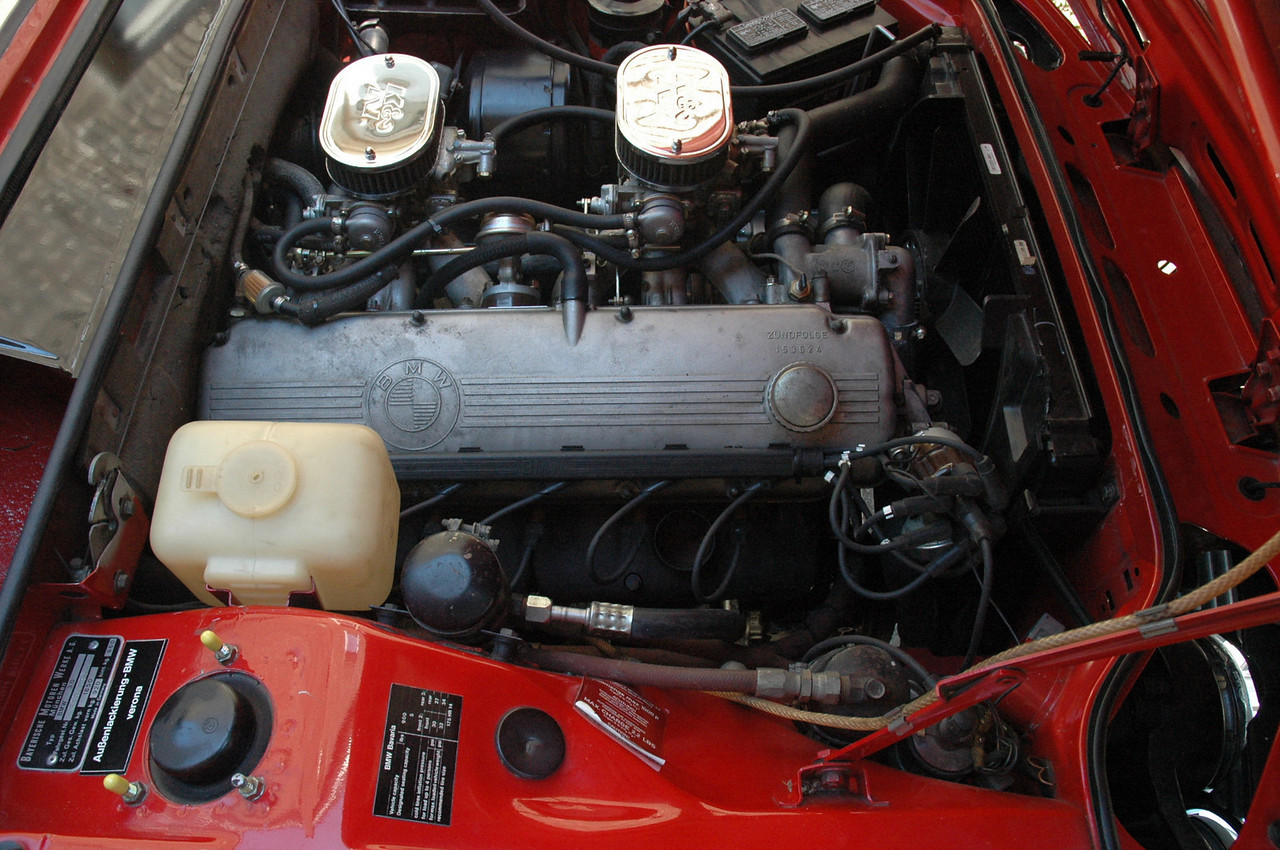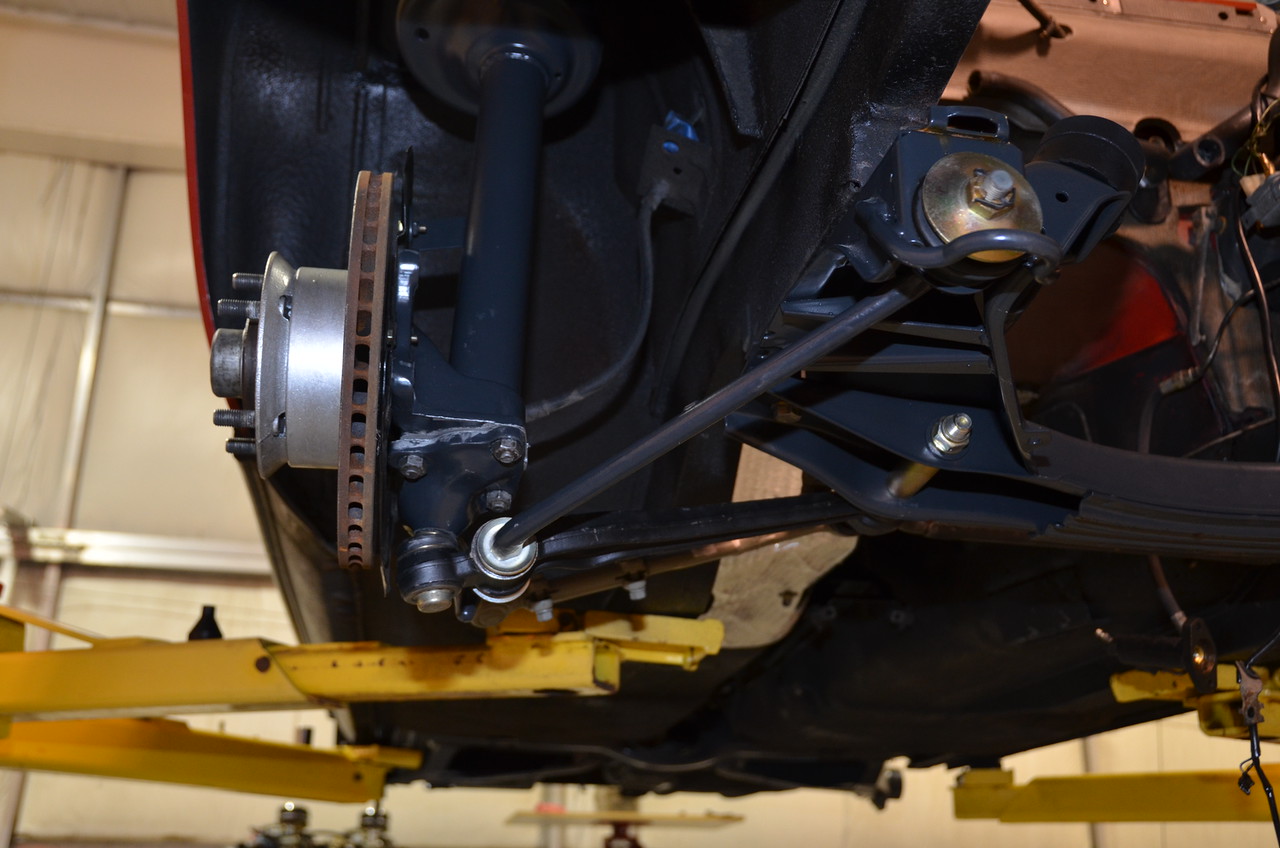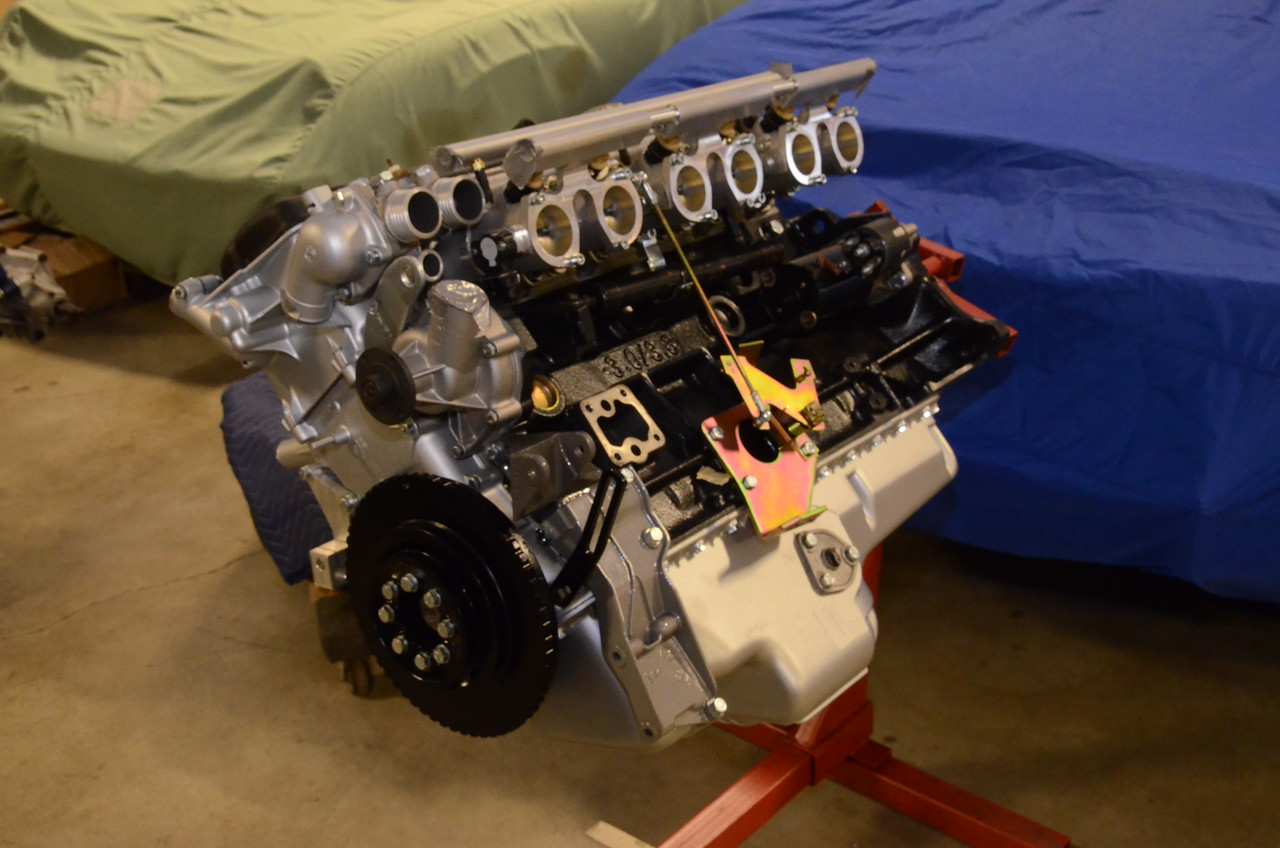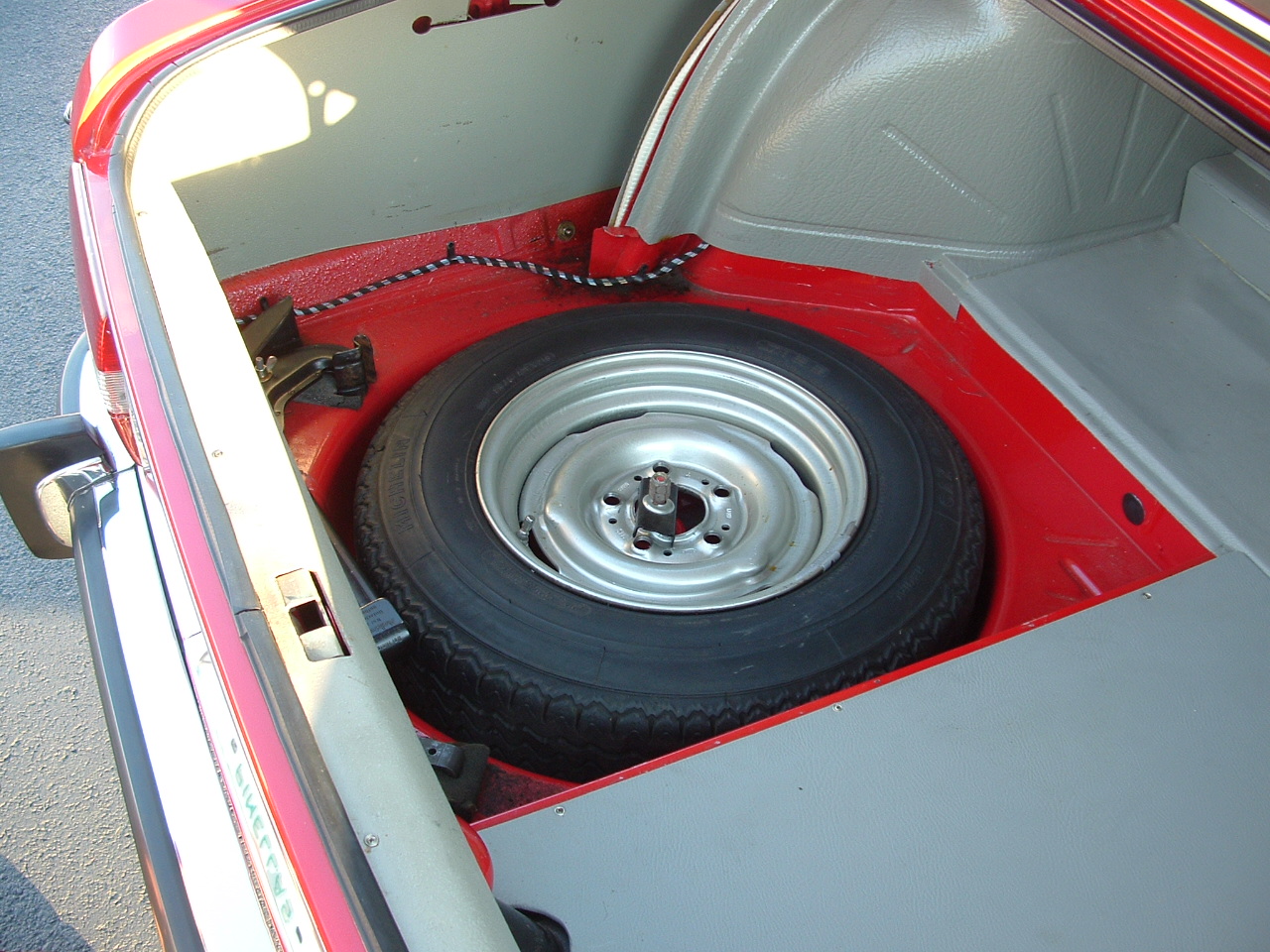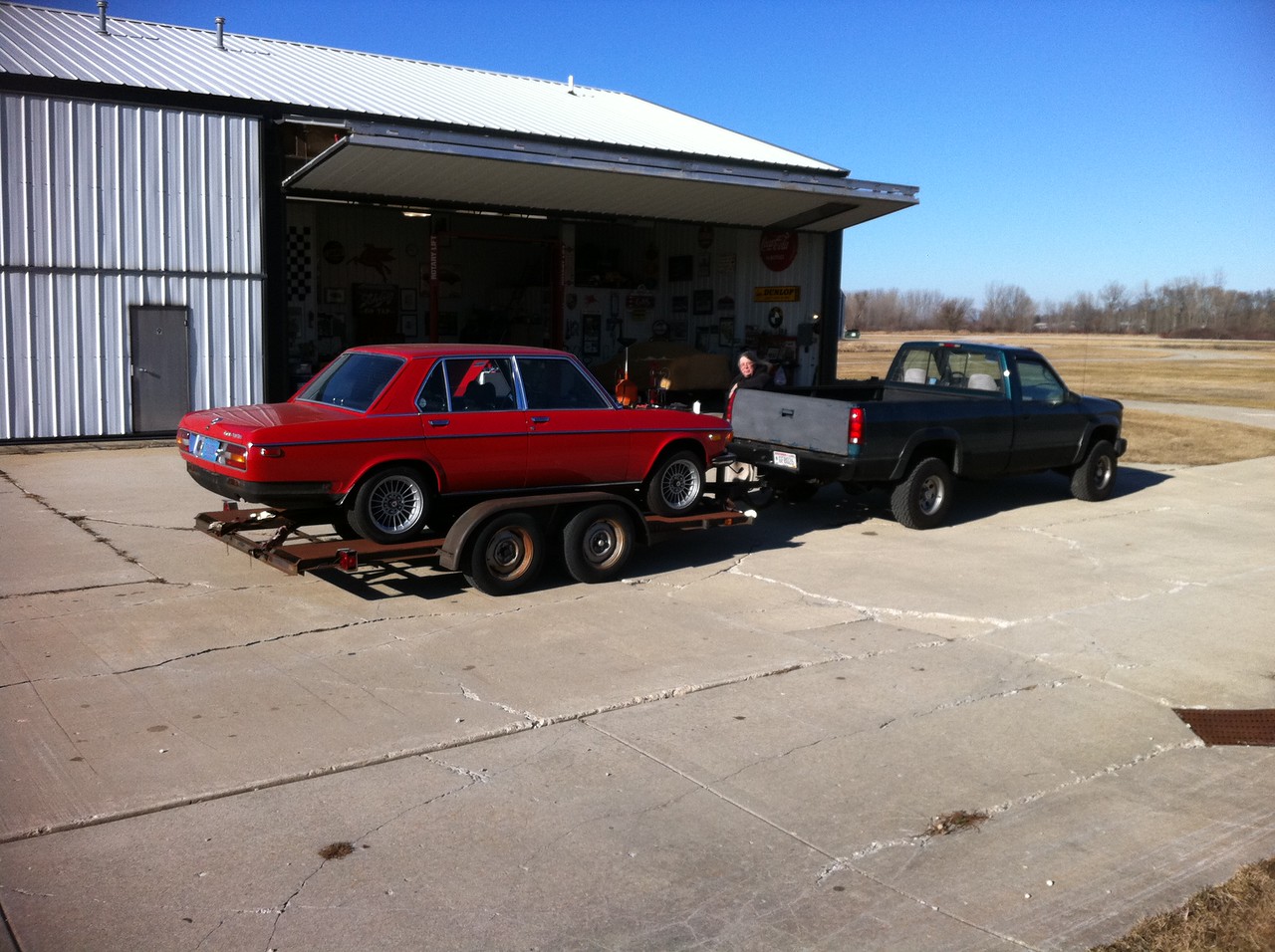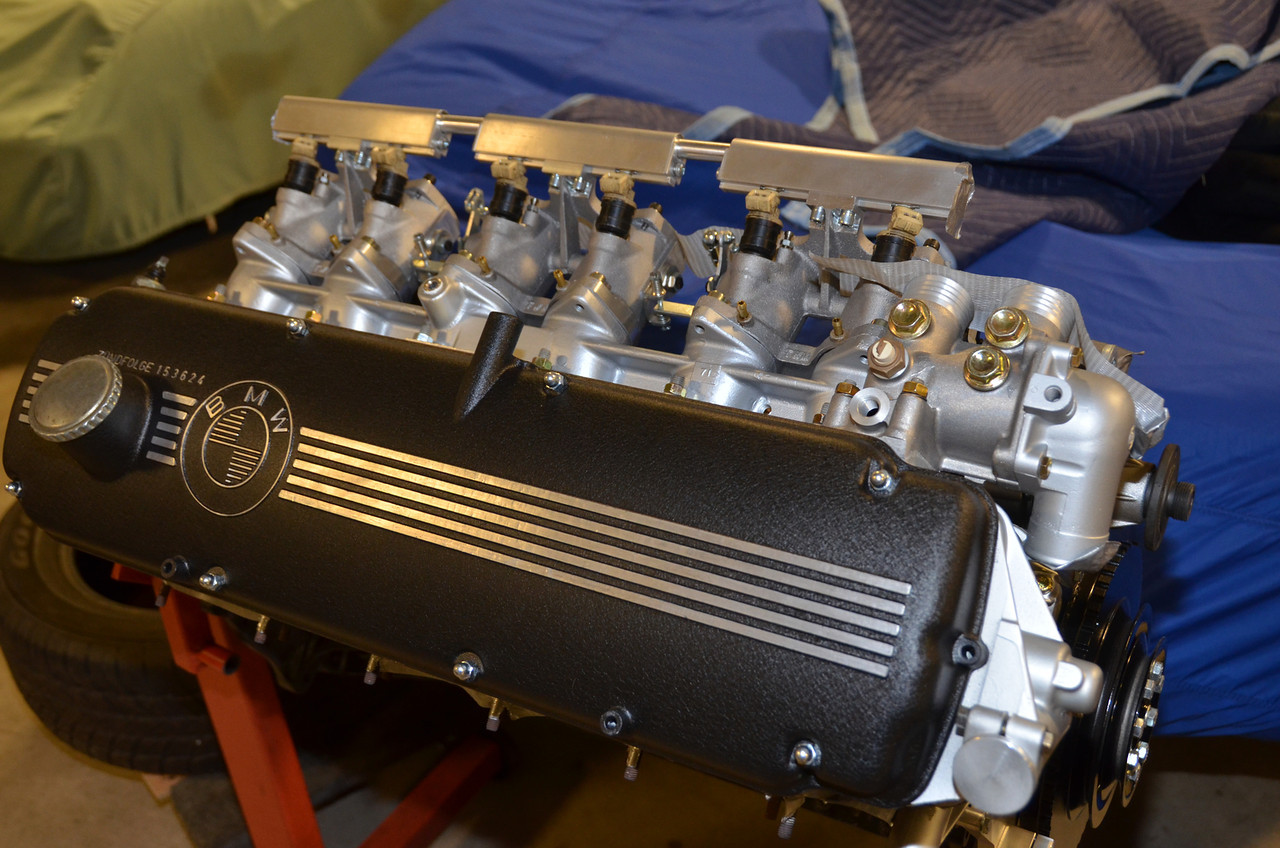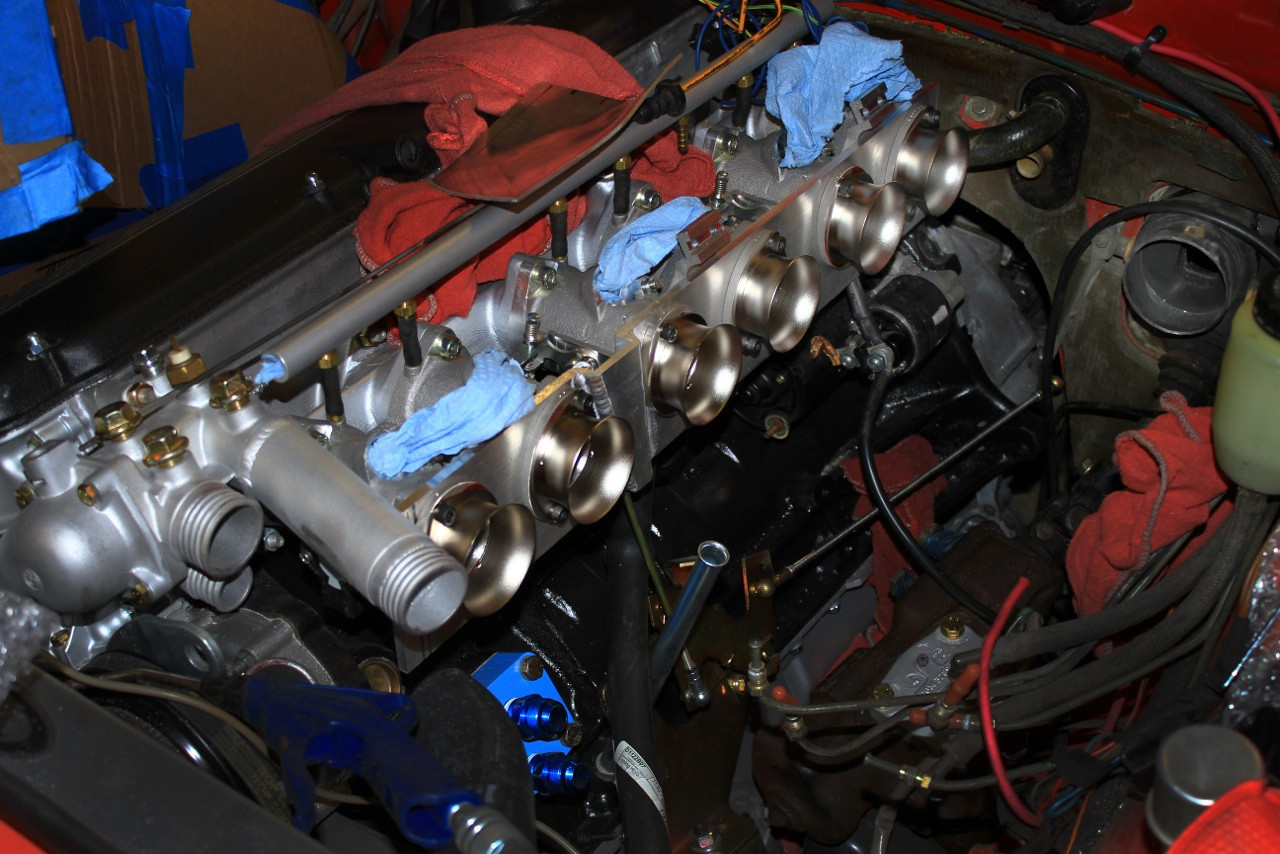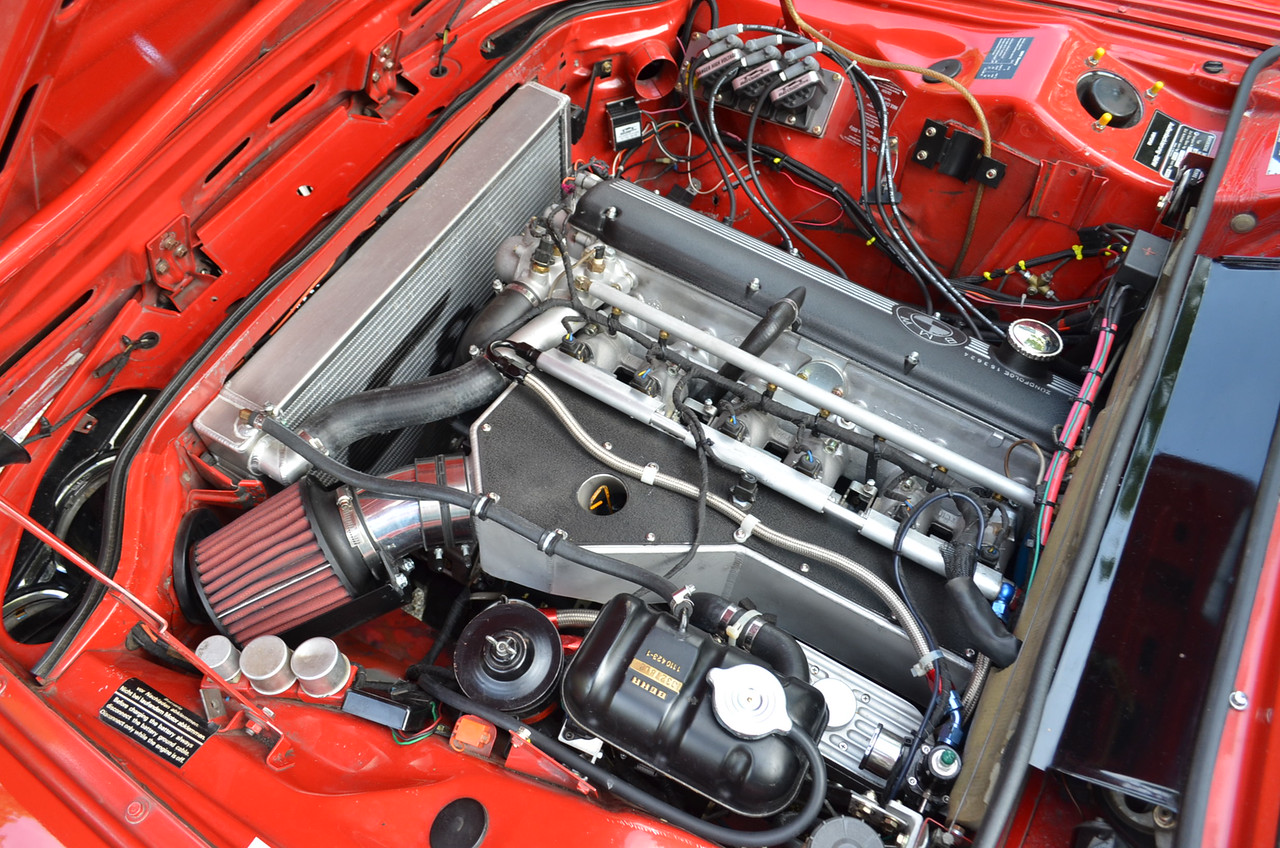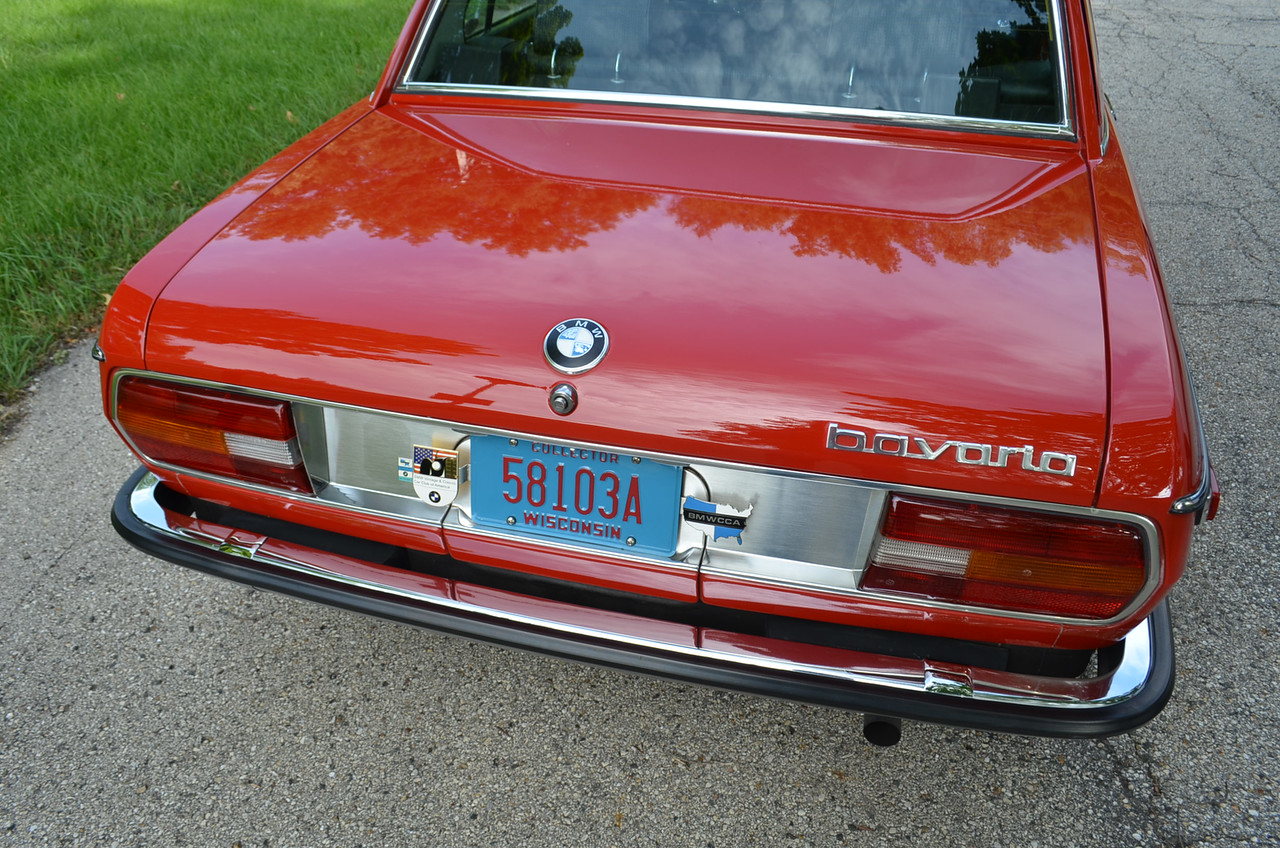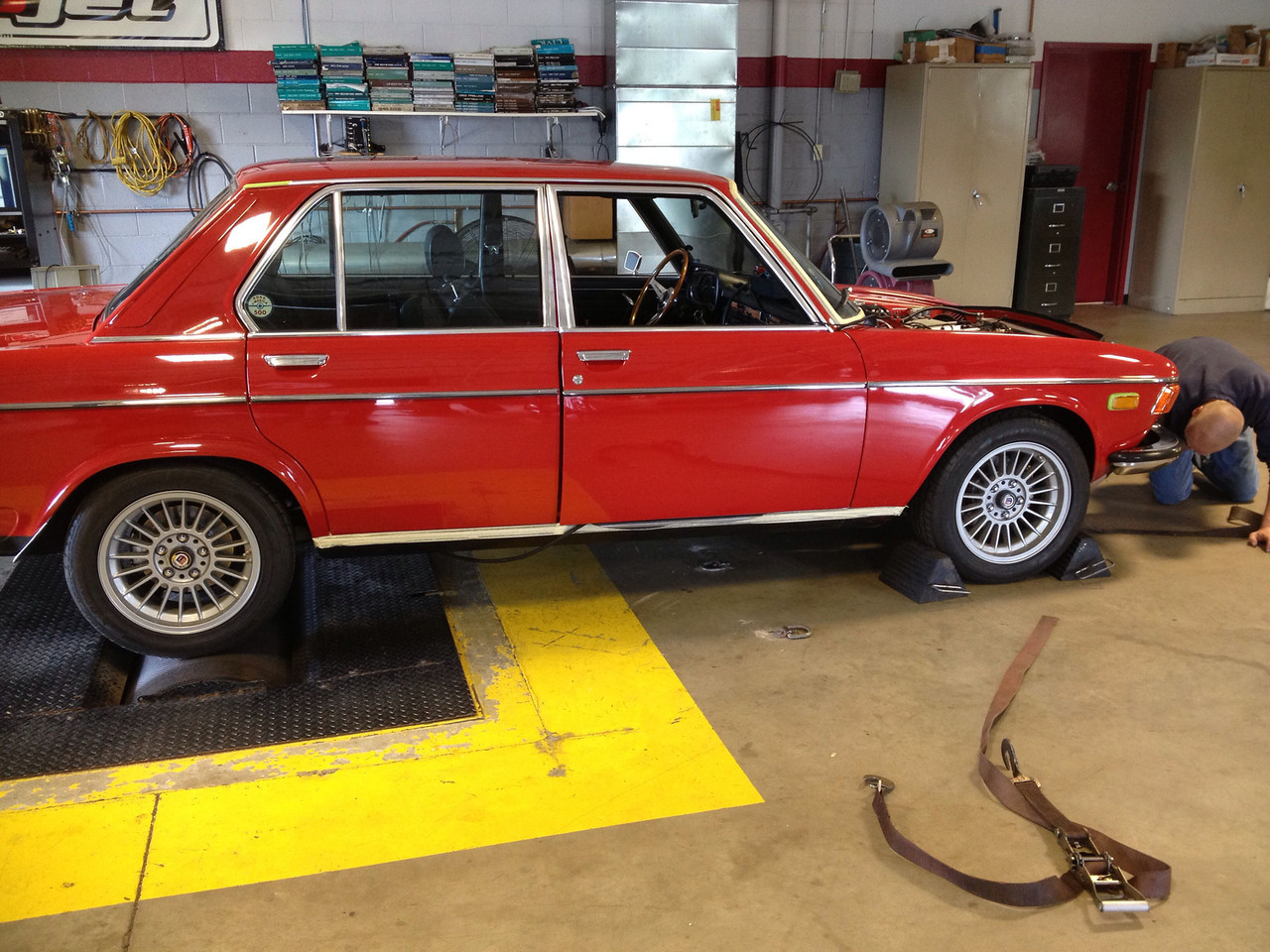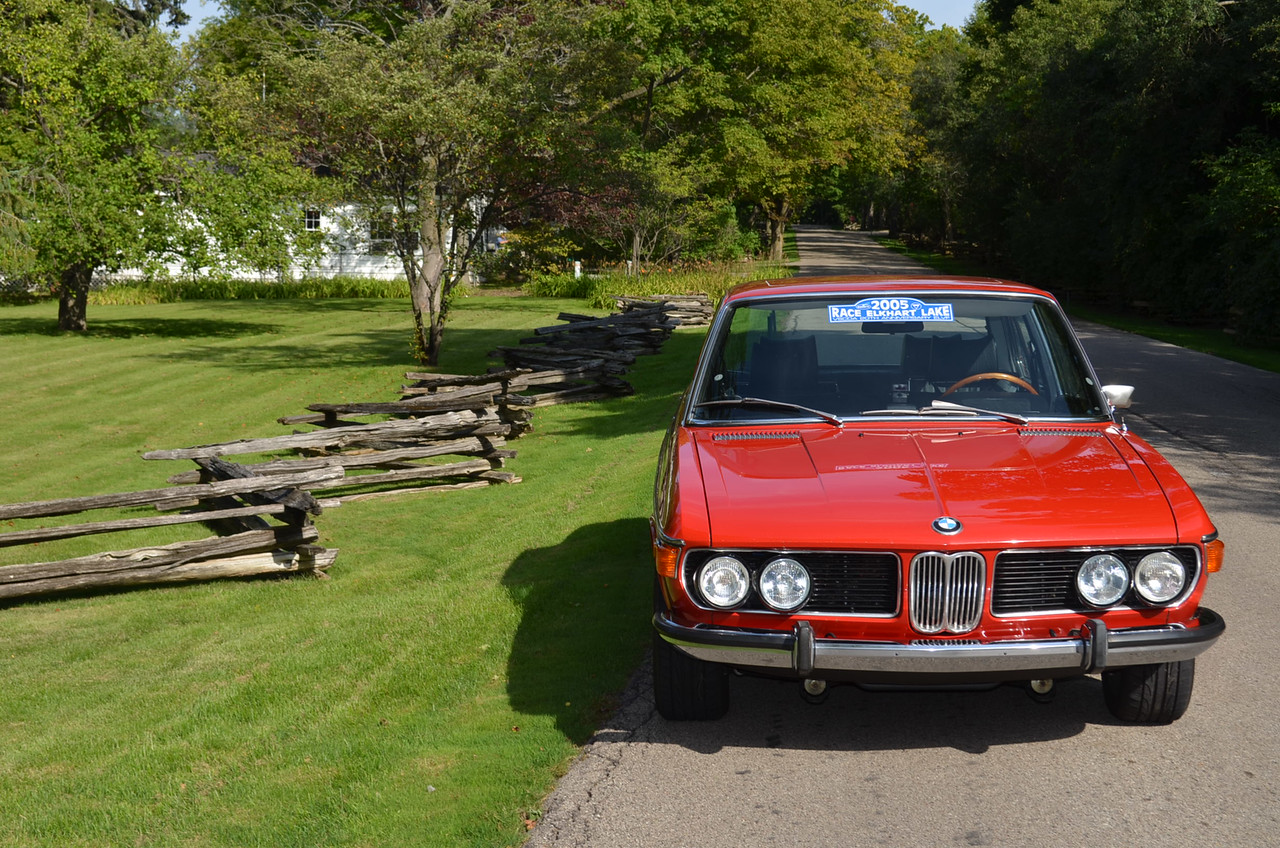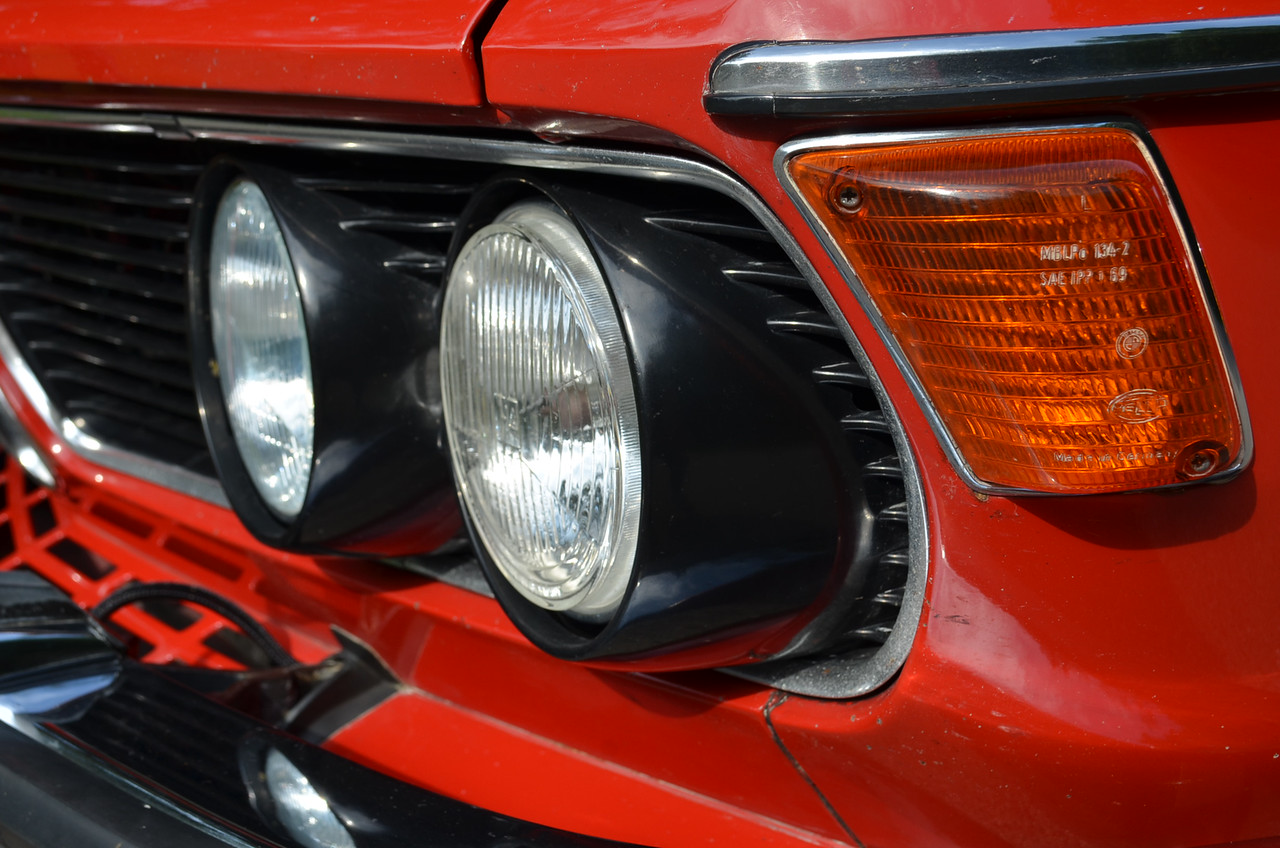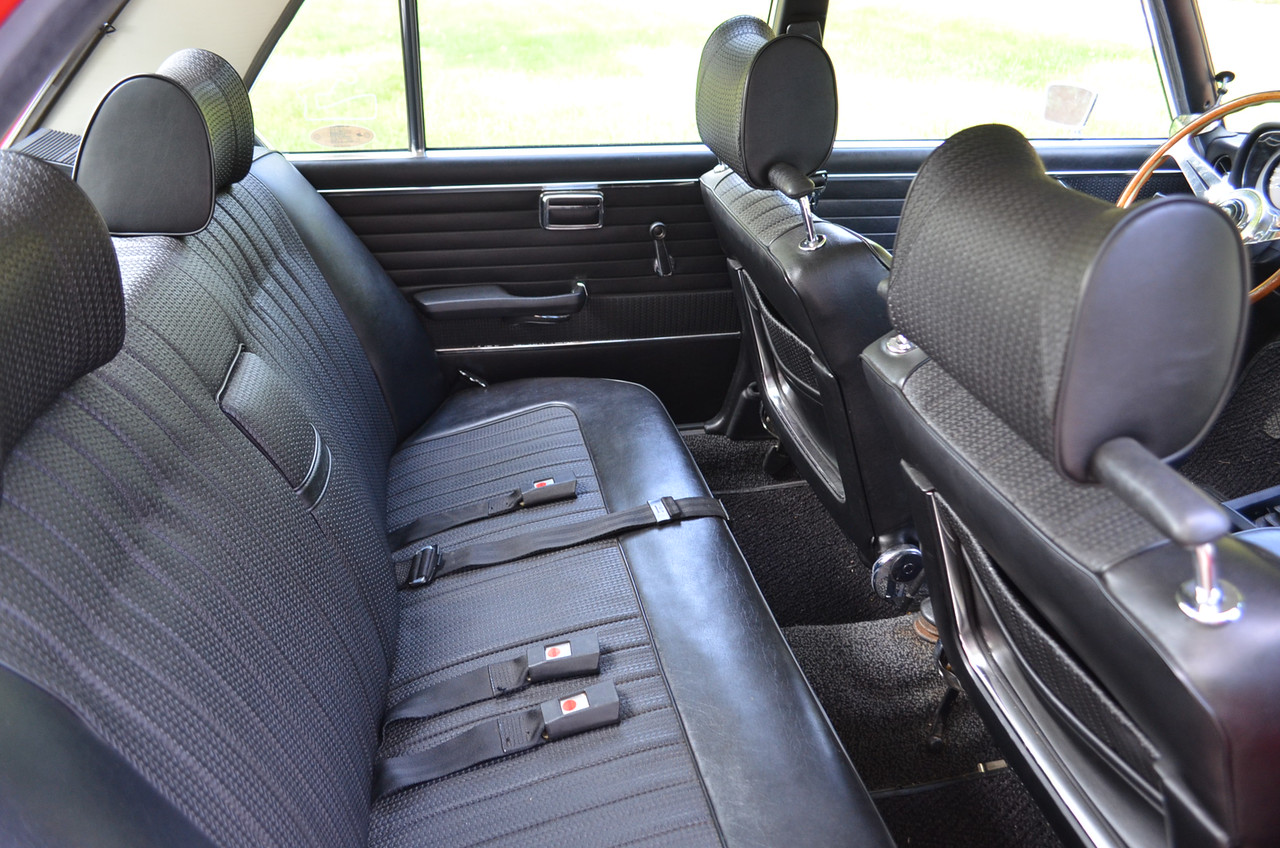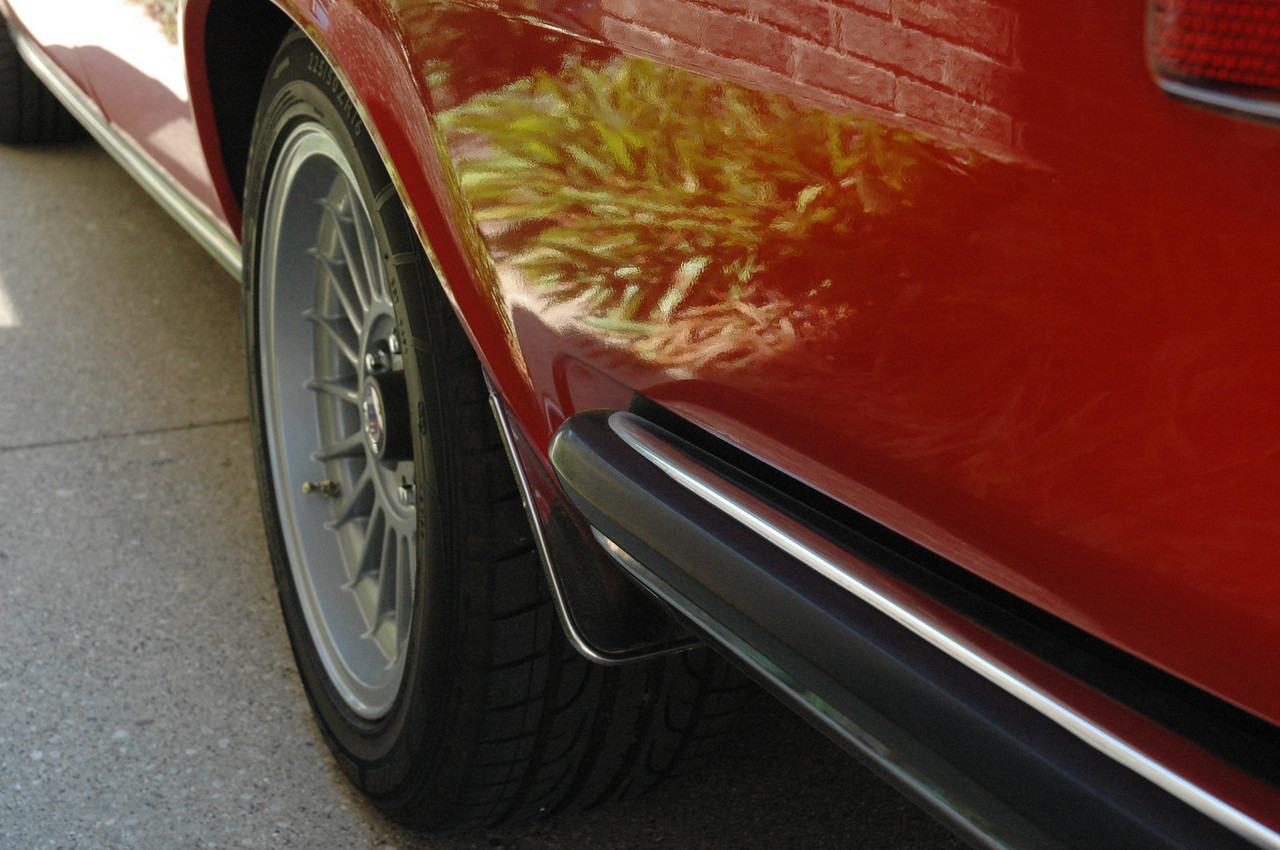The BMW Vintage and Classic Car Club of America (http://www.bmwvccca.com) gathers together Classic and Vintage model BMW enthusiasts for annual tours throughout the world. Lately, Jim Van Orsdol shared the story of he and his fabulous Bavaria E3. These cars are becoming quite rare, especially one in this kind of condition. He recently went through a restoration and refresh project that is worthy of sharing with our D4C following. Although he lives in Florida, he did road trip the car out to Colorado in the summer of 2014.
THE SIX MONTH 1973 BAVARIA PROJECT (VIN #3104089)
by Jim Van Orsdol (jim.van_orsdol@yahoo.com), Photographs by Elliott Schnackenberg and Jim Van Orsdol
I have a long-term affection for BMW’s E3. Whether a 2500, 2800, or 3.0/Bavaria. I’ve always considered it to be a handsome design with great proportions, excellent outward vision, a spacious interior and trunk, fine handling characteristics and, best of all, BMWs’ ever joyful and eager M30 3.0ltr 6-cylinder engine which Road & Track named “The Worlds Best Production Six Cylinder Engine” in a 1972 magazine article. That they are somewhat rare, even in the vintage BMW community only enhances my ownership enjoyment.
I think that the E3 is an important link in BMWs history and, like the readers of this story, I enjoy the experience of driving it as well as the aspect of its rarity. There is a CCA offshoot group, the Senior Six Registry, but there are only about twenty of us and we’re spread across the entire continent and several of the cars are non-operational so gatherings are very rare. I’m thankful for the BMWVCCCA and the opportunities it provides for not only driving the car, but also the camaraderie.
Eight years ago I stumbled upon an internet ad for a low mileage example which had been bought new in Wisconsin’s Fox Valley, just one hour from my home, was never driven in the winter months and was virtually stock and original except for the welcome addition of an overdrive Getrag 265 transmission. I wasn’t seeking to buy an e3 at the time, but the opportunity to purchase a rust free example and in the rare color of Verona, caused me to click on the “Contact Seller” icon (almost) involuntarily.
He provided straightforward and positive answers to my questions, didn’t shy away from a bit of price haggling and within a 24 hour period we had an over the-phone handshake. The first year that I owned it was about 90% drive and enjoy, and the remainder endeavoring to sort out a few help needed areas. The car had its original Solex carburetors, both of which needed rebuilding as throttle shaft bushings were worn, the mixture was overly rich and the engine would run-on after shut down. I couldn’t seem to lean them out without a subsequent deterioration in drivability on my own so I took it to my friend, Jim Kadow, an independent BMW shop owner who had been a certified BMW tech at my local dealer back in the day when this was a new car.
Jim’s take on the Solexes was that my best option was simply to replace them with Weber 32/36 DGV’s. Jim’s rationale was that his early experience with the original carbs was that they were not a good design and trouble from new. He recalled rebuilding some as a BMW tech when the cars were still under warranty. Jim said that he could rebuild mine but his strong recommendation was to make the swap, so I bought new Webers and Jim installed them. This promptly made an improvement (once we found two working solenoids for shutting off the fuel flow at key-off) and eliminated a run-on condition.
The car was running well, all of its systems operational and we were enjoying its many attributes. I did, however, have in the back of my mind that at some point I would like to rebuild the engine with a slight lean toward performance and also enhance the suspension in the manner I had done in previous decades with 2002’s.
The years prior to my discovery of sports cars and then BMW were dedicated to hot rods powered by flathead Fords or small block Chevy engines and where quarter mile performance was the ultimate test. Not that I did any of that on the street, mind you, but I did read that such occurrences did take place. After becoming a BMW owner I naturally gravitated to the specialty tuners such as Miller & Norburn, Ray Korman and especially Burkhard Bovensiepen’s company, Alpina. For many of us in the late sixties and early seventies, and largely because of their tremendous success in European sedan racing, Alpina was the magical word in BMW performance. Their successes came mostly due to enhancements to the 2002, but there were equally competitive CS Coupes and even a few e3 sedans.
It’s now forty years later but I still had the thought that I would like to equip a Bavaria with performance enhancements in the fashion of Alpina. In addition to the engine and drivetrain modifications, I also wished to renew all of the 35 year old bushings in the suspension in order to restore the car’s original firm (for its day) handling attributes. I have had a desire to perform a project like this since my friend and fellow enthusiast, Elliott Schnackenburg, nudged me toward the purchase of my first BMW, a 1967 1600 forty four years ago, and decided that this was the time.
When it came time to remove the engine, and because I wanted to replace/refresh all of the bushings and bearings in the suspension, my friend and highly skilled mechanic, Bob D., suggested that we take the whole assembly, engine, transmission, subframe and suspension out from the bottom, and with the car on a two-post lift, it was a surprisingly easy and straightforward task. It took just a couple of hours to disconnect the wiring, hoses driveshaft, steering box, strut tops, etc.. We then lowered the car until the subframe came in contact with two large wood blocks atop a standard shipping pallet, removed the four subframe bolts and then raised the car slowly leaving the subframe, engine, suspension and steering bits and transmission on the floor in a nice little package.
Within a couple of weeks of its removal I loaded the engine into the back of my pickup truck and headed to South Carolina to Powerplant Racing, a small BMWengine shop owned by Henry Lawrence, who has a long standing reputation for building high quality BMW engines ranging from stock 2002 engines to high output V12’s. Henry was previously the engine builder for Ray Korman’s shop and opened his own about twelve years ago. As expressed to Henry weeks before I delivered the engine, my goal was an engine with improved horsepower and torque without sacrificing driveability, dependability or longevity. We had decided to change the crankshaft to a Euro 3.2 version for increased engine capacity but the remaining modifications would be concentrated on simply improving the already great characteristics of the M30 engine; lightening the rotating mass for reduced stress and improved response and maximizing the flow through the cylinder head. We would discuss various options along the way, but in general I would defer to Henry’s judgement. My one specific requirement is that we use triple Weber 40 DCOE carburetors and in anticipation of the project, I’d already bought a beautifully remanufactured matched set from a Weber expert in Kansas. I left the engine in Henry’s capable hands and headed home to get my part done in the six months it would take for the new power plant.
I had decided that as long as I was going to need to disassemble both subframes in order to replace all of the near forty year old bushings in the suspension, that I might as well powder coat all of the factory grey components. With the help of my friend, Scott Z., I found a company which had a near perfect match for the color so after removing the rear subframe and components, all of the bits and pieces went off to the powder spa. Some of the original fasteners would be freshly zinc coated and reused, while all of the stressed bolts in the suspension and subframe would be ordered new from Walloth and Nesch, a German supplier of vintage BMW parts and with a very comprehensive inventory. I also ordered all new suspension and subframe bushings, tie rod ends and track rod, brake lines, spring rubbers, strut bearings, differential carrier, brake proportioning valve and wheel bearings.
Since the horsepower was going to be increased, then it followed that there should be a subsequent improvement in braking, so when they were on sale at W&N I ordered the later 3.0S ventilated rotors and calipers for front and rear. Although the rotors are the same size as the ’73 originals, the improved cooling of the vented versions would provide longer sustained brake power. There are aftermarket calipers/rotors available with increased rotor size but then a minimum of 16” wheel diameter is required and I wanted to be able to use my stock 14” steel or alloy wheels to retain the period look of the car. Unknown to me at the time I ordered them, the new rear rotors/calipers would require a change in axle stubs, but my friend and constant assistant in this project, Jenny Morgan, a long time BMW technician and Roundel writer, alerted me of the fact and she quickly tracked down a proper pair. From Ireland Engineering came Bilstein HD shock absorbers, shortened springs, a 22mm front sway bar and an adjustable rear.
My friend, Jack Fahuna, who owns an independent BMW repair shop in the San Fernando Valley and knew of my project, called to say that he had a 3.64 limited slip differential and “would I be interested?”.
Silly question, Jack, of course I would. I had anticipated that this would be a six month project, maybe even eight months. Seems reasonable, right? But Murphy’s Law has a tendency to intervene. The replacement or refurbishing of one component leads to another unplanned action; I look at the driveshaft on the floor of my shop and it’s obvious that the guibo has seen better days. If all of the suspension parts are going to look new, then I need to paint the half shafts and replace the four CV covers. The bare engine compartment, while in great shape for it’s age needs a thorough cleaning and the upper firewall insulation is a bit tacky, and yes, W&N has new ones. The list is far more extensive than this, but you quickly get the picture.
Add to this the fact that my skills are limited and I need assistance to properly assemble all of this stuff. My little airplane hangar shop is forty miles one way from home and there’s plenty of other stuff going on in my life besides this old car. There are days when I drive all the way out there and am stymied by some aspect of the planned task and accomplish little. Jenny has offered her considerable skills in the reassembly, but she too has other commitments. Parts have to be tracked down and questions have to be asked. Sometimes a week or two goes by and very little gets done. I’ve been changing the oil on all of our cars forever, and now my most useful shop tool, the two post lift, has a body shell on it and it’s not going anywhere soon. Henry has disassembled the engine and evaluated the parts required, but the six months has now past so I’m needing to reevaluate the timeframe. I don’t at all lose enthusiasm for my project, but O’Fest ’08 (and maybe ’09) are looking not likely.
The reality of this sort of project is “Make an estimate of time, double it, and then be flexible”. In September of ’08, Jenny and I begin inventorying the parts, laying them out to assure us that we can begin reassembly without major interruption. When confident that we have all of the parts I borrowed a factory bushing press tool from Elliott and we begin the somewhat tedious but encouraging stage of reconstruction. The fact that everything we’re now handling is either new or refinished adds to the enjoyment and we begin to envision a rolling assembly in the not too distant future; we’re actually having fun and my torque wrench is getting a good workout.
At about this point in the process I begin to reevaluate the use of Weber carbs. I have had a long desire for side drafts on a BMW as not only do they perform well (when properly tuned) but they also look simply terrific in an engine compartment; it’s the single component that says (think Alpina), Performance! There are new and more modern/reliable alternatives, however, and one which has caught my interest is an ITB (individual throttle body) fuel injection system from TWM, a company which specialized in Weber carburetor systems and parts, but has now enhanced their product line with an in-house designed fuel injection system. It mounts to a standard side draft intake manifold, uses Bosch injectors and, importantly to my esthetics, is comprised of six individual intake runners and so just as visually appealing as the Webers. I already had the manifold, the cost of the system is a wash if I sell the Webers and I quite like the idea of F.I. for a car in which we are going to set out with on extended (see above) trips. An additional cost would be an ECU to monitor the system, but there were additional advantages to the ECU. Foremost was the elimination of a distributor with crank-fire ignition, and control of certain accessories such as an auxiliary cooling fan or a rev limiter. In recent years, and with several flat four and flat six cylinder engined cars from that company in Stuttgart, my biggest occasional headache has been related to multiple carburetors. I’m not devoid of basic skills but would never say that they were my area of expertise; yes, I’m carburetor challenged! I talked to Henry and he was in agreement; has done these systems before and is also a dealer for Electromotive, a company making sophisticated ECU’s expressly for such applications. Jenny says it’s a no brainer.
My friend, Scott Z., long time BMW guy who also has cars from Stuttgart and owns a performance shop with extensive expertise in fuel injection, not only gave the thumbs up, but also invited me to bring the car to his shop after it became a roller and his technicians would perform the finals, including wiring and tuning the ECU followed by a run-in on his chassis dynamometer. I couldn’t think of a single reason not to take this route and was re-invigorated at the prospect of adding some technology to the project, and most appreciative of my friend’s offer.
My last reference to month and year will be just that, my last. Even now, when looking back and attempting to reconstruct the chain of events and timeline it’s hard to recall where the time went. There were four of us who were directly involved in moving toward a finished car but it was nevertheless somewhat part time for all.
I had a son get married and a grandson born. Charlie and I spent important time with our aging parents. Scott had a business to run which was supported by his core customers and the Bavaria had to take its turn when time permitted. Jenny had other projects such as the completion and marketing of a superb Isetta restoration manual created at home on her Mac. Henry had BMW racers as customers and lots of demands during the race season. Oh yes, Charlie and I drove to another Rennsport Reunion in Monterey - which are held every three years and should provide a strong clue to the current length of my six month project.
And then there was engineering and fabrication to be done. A fuel injected car requires a return line for unused fuel which meant that we had to first run a line and then provide a way to get it back into the tank as none of that is present on a carbureted car. The fuel return line was fairly straightforward and Carl Nelson of La Jolla BMW provided the perfect answer for the return/fuel sender. He sent an E30 tank insert with specific instructions for shortening it the appropriate amount so as to fit the E3‘s tank depth. Carl also supplied me with a rotary AC compressor and brackets as well as some very helpful advice along the way. We needed some additional space in the engine compartment for a fuel injected system’s required air box so the battery and huge brake booster, both of which were on the intake side of the engine, became targets for removal.
The battery was fairly easy in comparison and a somewhat common modification. It frees up a good deal of space and also transfers thirty pounds of weight from front to rear, a positive move for fore/aft balance. We mounted an aluminum box in the center front of the trunk, provided a suitable ground nearby, ran a heavy and well insulated cable forward and under the carpeting and then connected it to an E36 fusible link mounted at the top of the firewall. Just like a new BMW, I can jump the battery from the engine compartment even though the battery is in the trunk.
The nine inch diameter brake booster, however, was a daunting challenge. Not only is it large in diameter, but it sits on a horizontal pedestal which is mounted to the firewall and at the end of the booster is the master cylinder. The whole assembly extends into the space about 18 inches. Whatever it is you’re doing these days, you can bet that someone’s done it before and made an entry on the internet, so Jenny and I scoured the BMW discussion sites hoping for a solution. One prevalent modification was to substitute a smaller diameter tii booster for the monster and though I found and bought a reasonably priced unit off Ebay, we were still not convinced that it would free up enough space and, most importantly, could it provide adequate assistance to the brakes of the Bavaria which weighed some 700+ pounds more than it’s little brother. I feared that my goal of improved braking with ventilated rotors would diminish drastically with a smaller booster, so back to the internet we went and to a very unlikely source/solution.
My love of traditional hot rods has never diminished and so I often peruse internet hot rod sites to view projects under construction, finished cars and parts suppliers. On one occasion I happened to be reading an article about recent innovations in components related to safety and learned of a new and very compact brake system which incorporates a reservoir, master cylinder and electric accumulator to provide an amount of boost equal to or (in our instance) greater than the booster. We determined that the accumulator could be mounted at the base of the firewall so that the only part actually in the engine compartment, the reservoir/master cylinder was a mere 8.75” long and 3.5” wide. We also realized that with this set-up we could shorten the booster pedestal and actuating rod a few inches, fabricate a mounting bracket and free up even more space. After talking with the owner/engineer of the company and describing our application we enthusiastically ordered it.
At about this point in the process the compartment was ready for its largest and most important component and the timing couldn’t have been better; Henry had finished the engine (whoopee!) and I was off to North Carolina in the pickup truck. It looked beautiful.
Fresh black paint on the block contrasted with its bead blasted oil pan, head and cam cover, new and shiny fasteners throughout and those six TWM intakes - “Holy cow, Henry, that looks awesome” were the first words spoken when I entered his small but tidy shop. It has been a long wait, but at this moment it really didn’t matter because the car hadn’t been ready for it until now and the timing was perfect for taking both the (now) rolling car and its engine to Scott’s shop for the last phase.
As noted earlier, the fuel injection system would require an air box which provides a chamber from which each intake can draw equally, provides an environment in which air temperature can be measured for the ECU’s constant adjustment of air/fuel ratio and allow for a single air filter. Air boxes are available from various sources, but since our system was unique we set out to mock up a unit which would best utilize the space available, provide room for an adequate air filter and yet still give access to other components, such as the oil filter, for routine service.
The final product, which took a full five days of concentrated effort, not only fulfills all of the aforementioned requirements but is also quite nearly a piece of artwork. Fabricated of aluminum and beautifully shaped to best utilize the available space, Tim’s welds are perfectly uniform throughout, the base is exceedingly sturdy and the dipstick access (my favorite little detail) quite ingenious. They simply calculated the angle through which the stick would penetrate the box, cut appropriate holes in the top and bottom and then weld a 1.5” aluminum tube inside the box. The box is completely sealed, the air flow inside is virtually unimpeded and the little yellow dip stick hook is easily accessible.
Nice work you guys.
What remained to be done was the stuff of which I could really be of little help. We had already determined that the 6”x4”x1.5” ECU controller would be fitted behind the glove box in a perfectly suited cool, dry, hidden yet accessible nook with ready access to 12v power, the engine compartment and dash. We’d found a perfect spot for the coil pack on the inner fender and mounted the crank ignition sensor in its bracket next to the toothed lower pulley so now it was but a few (actually quite a few) hours of wire sorting, routing, stripping, soldering, connecting, testing and wrapping the myriad of wires sprouting from the ECU.
I duly expressed my supreme confidence in Tim and Jenny and then headed to Florida for two months with my wife. Why would I be of little help? Because with age comes wisdom; I know my limitations, and I’m electrically challenged. I had told them that I wanted to be present for its first sign of life, but these guys had so many hours, busted knuckles, brilliant ideas, frustrating setbacks and short tirades of (blue) exclamations into the car that I said “Go for it, but make a video with sound please and send it to me”, which they promptly did. In their excited state the iPhone video operator neglected to touch start for the initial crank-over but mere minutes later I was able to hear and see the engine purring smoothly at idle for the first 20 seconds of what I hope will be many years of listening to it sing from the compartment ahead of me.
After picking up the car from Scott’s shop I might have added an addendum to the Bavaria script on the trunk reading “CSi”, which would have stood for “Constant State of Improvement” and accurately described the necessary adjustments which have been made post-project.
Tim tuned the engine on Scott’s chassis dyno initially, but it was simple to get it to a reasonably drivable state. When I picked it up I put it directly into a trailer and took it to Henry’s shop for the finals on his dyno. He has a great deal of experience with the characteristics of BMW engines as well as vast knowledge of fuel injection and Electromotive engine management. After his in-shop tune we took the car out on the road for real world testing and adjustment which dialed it in quite precisely.
In projects such as this, however, there are generally going to be little tweaks to be made for awhile and the Bavaria was no exception. I had assembled the front struts with an extra and unwelcome washer/bushing which caused a steering memory. I needed to re-configure the throttle bell crank on the block to slow the opening of the throttles as they were way too sensitive to pedal input. I had some small electrical issues due to an important but overlooked ground. I enlisted the help of a friend in order to properly adjust and employ the idle air valve. I fabricated an inlet through the radiator bulkhead which supplies cool air to the intake. I still have a short list on my shop chalkboard and likely will add to it as long as we continue to enjoy the car, AKA the CSi Factor.
And though there are yet a few items on my to-do list, the car has performed beautifully and we thoroughly enjoy driving it. It has all of the power I had hoped for, handles exceptionally well and yet its basic characteristics have not changed dramatically; it’s just better in every respect but without loosing its inherent attributes. It has about six thousand miles now and has been able to participate in both the Upstate New York and Colorado V&CCA events without (OK, one laptop ECU adjustment for the altitude) a single problem.
I have to say that I like it a lot.... and I think that Burkhard would too.
CLICK HERE FOR THE BUILD PHOTO GALLERY
Engine Modifications
• 3.0/3.2 liter block
• 3.2 polished crank
• Wiseco light weight forged pistons
• Crower light weight forged connecting rods
• Lightened rocker arms
• Three angle performance seats in head
• New valve guides
• Dual valve springs - cut spring seats in head
• Dbilas 300 degree camshaft - 1.2mm lift
• Exhaust ports matched to headers
• Port & polish cylinder head
• Match port intake manifold
• Stahl headers
• Surface cylinder head
• Bore & hone block with deck plate and mains torqued
• TWM side draft throttle body fuel injection
• Bosch injectors
• Electromotive engine management
• Lightened flywheel
• HD clutch
• Three coil crank-fire ignition (no distributor)
• Engine Output: 250hp @ flywheel and 205 ft lbs torque
Chassis Restoration & Modifications
• Remove, media blast and powder coat subframe & suspension assemblies
• New bushings throughout
• New or re-plated fasteners throughout
• Bilstein HD shocks
• H&R springs
• 22mm front - 18mm adjustable rear sway bar, powdercoated
• Limited Slip 3.64 differential
• 3.0si ventilated discs/calipers F&R
• New steering arms, pitman arm & pitman bushing
• Battery relocated to trunk compartment
• Replace Brake Booster with electric accumulator system
• New brake lines, proportioning valve & emergency brake cables
• Wurth coating on full underbody
• Rotary A/C compressor
Latest posts by Tom Schultz test #2 (see all)
- 2025 Event Details - 13 May, 2025
- 2024 Durango Event - 24 February, 2024
- Drive 4 Corners 2022 Low-Key Event Concluded - 1 September, 2022




